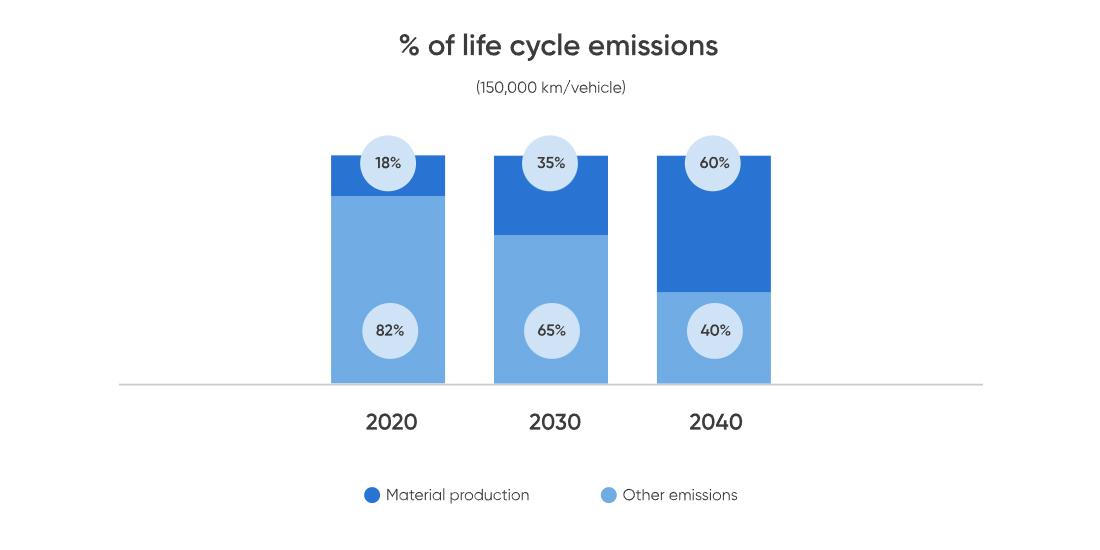Products
Product pages available in
EN - DE - FR - ES
Sustainability
News, events and stories

Steel wheels offer quick way to reduce emissions and improve electric vehicle efficiency
Over the past few decades, car wheels have evolved to feature an open design which helps cool the brakes of vehicles powered by an internal combustion engine (ICE). But with transition to electric cars, that open design is no longer necessary. Instead, carmakers are opting for closed designs which can improve the aerodynamic performance – and range – of their electric vehicles. Steel wheels are between six- and eleven-percent lighter than their aluminium counterparts and have lower CO2 emissions over their full lifecycle. For automakers facing potential regulations on the lifecycle emissions of their vehicles, steel wheels offer an easy way to cut weight and reduce emissions quickly.
ArcelorMittal undertook a benchmarking study to assess the weight of wheels on B- and C-segment vehicles manufactured between 2004 and 2021. More than 130 steel and aluminium wheels were assessed. On average, 15-inch steel wheels were 6.7 percent lighter than their aluminium counterparts. When it came to 16-inch wheels, the weight of the aluminium solutions were 11.1 percent heavier than the average for steel wheels in the same size. This is a clear advantage for steel as lighter wheels reduce emissions linked to the use phase of car’s life.
Steel improves total cost of ownership
“Steel wheels are formed from flat steel products,” notes Jérôme Favero, head of automotive steel solutions at ArcelorMittal Global R&D. “By contrast, aluminium wheels are cast, making it easier to create different designs and shapes. However, the addition of a simple hubcap to a steel wheel can transform its appearance and aerodynamic efficiency.”
A 2019 study of the Tesla Model 3 by Car and Driver magazine found that wheels with hubcaps improved the vehicle’s efficiency by an average of 3.4 percent. Range was boosted by 16 kilometres (10 miles). “Hubcaps can be produced in almost any shape and colour,” says Jérôme Favero. “This makes tailoring a vehicle’s appearance very simple.”
For shared mobility solutions such as taxis and autonomous vehicles, the total cost of ownership is more important than aesthetics. “This allows fleet owners to specify sustainable steel wheels which are durable, lighter, and more efficient,” notes Julio L. Rivera, LCA specialist with ArcelorMittal Global R&D Sustainability.
Lifecycle emissions lower with steel
To calculate the environmental performance of steel wheels, ArcelorMittal compared CO2-equivalent emissions from a 16-inch steel wheel with one diecast from an aluminium alloy. The results showed that carmakers can quickly improve the performance of their vehicles by switching to steel wheels explains Jérôme Favero: “Using data from the World Steel Association, we calculated that production of a steel wheel emits around 10.23 kilograms of CO2 emissions. Another 1.95 kilograms are produced during the manufacture of the materials required. That’s a total of 12.18 kilograms of emissions per wheel. By comparison, the total for aluminium is 26.12 kilograms of CO2 per wheel, making steel 53-percent more efficient. “Our calculation uses the recycling credit – avoided burden,” says Julio L. Rivera.
Future emission regulations for vehicles are forecast to be calculated on the full life cycle of a vehicle – including emissions from fuel and electricity production as well as materials and use. For this reason, carmakers need to adopt more environmentally friendly materials wherever possible. Primary aluminium production results in 8.6 tonnes of CO2-equivalent emissions per tonne of material according to data from the European Aluminium Association. By comparison, producing a tonne of hot rolled steel from primary sources emits just 2.29 tonnes of CO2-equivalent emissions.
The transition to more sustainable mobility solutions is making material choices increasingly important when it comes to the life cycle emissions of cars. In 2020, material production only accounted for around a fifth of emissions. But the shift to electrification is decreasing emissions in the use phase of the vehicle’s life and shifting focus to the construction and end-of-life phases. By 2040, material production is expected to account for around 60 percent of emissions from car.
Emissions can be reduced further by using steels with ArcelorMittal’s XCarb® recycled and renewably produced label. “Our XCarb® recycled and renewably produced steels are made with renewable energy and recycled material,” says Julio L. Rivera. “This reduces CO2 emissions dramatically and will guarantee steel’s role in the future of mobility.”

Emissions from materials become more important as electrification using renewable energy sources increases [Source: ‘The zero-carbon car: Ablating material emissions is next on the agenda’; McKinsey & Company, September 2020)
| Wheel size | Steel | Aluminium | Weight difference |
||
| Weight (kg) | Samples | Weight (kg) | Samples | ||
| 15-inch/38.1 cm | 7.44 | 7 | 7.94 | 27 | +6.7% aluminium |
| 16-inch/40.64 cm | 8.41 | 15 | 9.34 | 82 | +11.1% aluminium |
Aluminium wheels weigh between 6.7 and 11.1 percent more than steel wheels [Copyright ArcelorMittal]

Source: Car and Driver magazine, December 2019
Energy consumption of the Tesla Model 3 without hubcap (left) and with hubcap and steel wheels (right)

Steel wheels are lighter than aluminium, extending the range of electric vehicles [Copyright Shutterstock/Chepko Danil Vitalevich]

CO2-equivalent emissions for steel and aluminium wheels [Source ArcelorMittal]






